There is an old story of a person arriving at the pearly gates of Heaven and asking St. Peter for an introduction to the greatest general who ever lived. St. Peter points someone out and says, “There he is, the greatest general in the world.” The new arrival is shocked. “No way!” he exclaims, “That’s not the greatest general … that guy isn’t even a general. I knew him on earth and he was just a cobbler!” St. Peter responds: “I know. But if he had been a general, he would have been the greatest of them all.”
This fable is cute, but also raises a deeper question about how (or if) humans can discover our greatest creative potential. Someone might be a brilliant novelist if they could find the time to write. In the right societal context and presented with good opportunities, a given person might change the course of modern dance, or unlock mysteries of particle physics, or become a great general.
Today, there are thousands of self-help books, websites, counselors and consultants all promising to help people find their creative essence. These resources claim to offer insights about successful, effective and creative people and about how we can apply them in our own lives. Still, back in the middle of the 20th Century this idea that someone could even study or learn about something as elusive as creativity was as far-fetched as the pearly gates tale.
At the time, creativity was seen as nebulous and unconscious, perhaps not accessible at all to scientific inquiry. Then, in the early 1950s, the Institute of Personality Assessment and Research (IPAR) at the University of California, Berkeley began developing new and different ways to analyze personalities. The scientists at IPAR attempted what many thought was impossible: to study creativity in a methodical and scientific way, working to determine what specific personality traits make certain people creative.
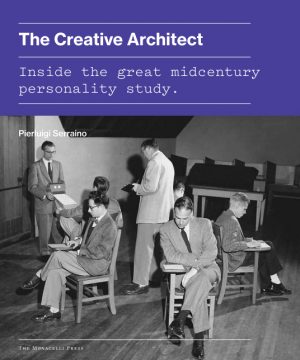 IPAR invited creative people of all kinds to come to Berkeley and be studied, from authors of fantasy novels to research scientists and female mathematicians. They attracted literary stars including Truman Capote and William Carlos Williams. One of their biggest and most successful studies, however, involved an array of famous architects.
IPAR invited creative people of all kinds to come to Berkeley and be studied, from authors of fantasy novels to research scientists and female mathematicians. They attracted literary stars including Truman Capote and William Carlos Williams. One of their biggest and most successful studies, however, involved an array of famous architects.
Researchers saw architects as people working at a crossroads of creative disciplines, a combination of analytic and artistic creativity. As professionals, architects had to be savvy as engineers and businessmen; as aesthetes, they also acted as designers and artists.
Over the course of four weekends in 1958 and 1959, IPAR brought together 40 of the most well-known and important architects of the period. IPAR observed these architects, gave them tests and asked them all kinds of questions, including some relatively ridiculous ones:
“For the next 45 minutes we would like you to discuss this notion: if man had developed a third arm, where might this arm be best attached?”
That is an actual question from the study—and a question that IPAR posed to world-renowned designers from around the country including Richard Neutra, I.M. Pei and Louis Kahn (click below to view the complete the set of mosaics these three created during the study).
Though it has never before been aired in public, there is extensive (and rather amazing) audio documentation of these tests. In response to the question above, one taped architect responded: “I would suggest that the most effective place if it came right out of the top of your head,” to which another firmly retorted: “I disagree with that.” A third architect volunteered: “I think it ought to come right between his shoulder blades, so he can scratch his bottom or his head at will!”
IPAR scientists observed the architects as they filled out questionnaires, made mosaics out of colored tiles and discussed various hypothetical problems, including the third-arm dilemma. Ultimately, what IPAR learned helped transform the way people think about creativity today.
Personality Psychology
This architect study traces its origins back to the founder of IPAR, personality psychologist Donald MacKinnon. He liked to start his speeches with that story about St. Peter and the cobbler. For him, the tale embodied his vested interest in finding the secret “generals” hiding within proverbial “cobblers” across a variety of disciplines.
During World War II, MacKinnon served in the Office of Strategic Services, precursor to the Central Intelligence Agency. His job was to assess the personalities of American troops in order to see which of them could perform well in combat.
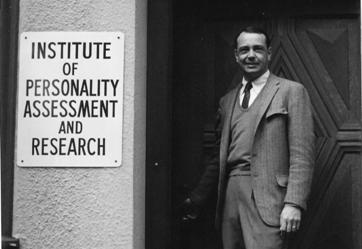 When the war was over, MacKinnon joined the faculty at Berkeley and founded IPAR in 1949 to continue his personality research. Within a few years, however, IPAR had transitioned from studying combat readiness and efficiency to creativity. This shift came about in part thanks to the Soviet launch of Sputnik. Seeing this success got the American government and military anxious to find new ways to outsmart (or: be more creative than) their Russian counterparts.
When the war was over, MacKinnon joined the faculty at Berkeley and founded IPAR in 1949 to continue his personality research. Within a few years, however, IPAR had transitioned from studying combat readiness and efficiency to creativity. This shift came about in part thanks to the Soviet launch of Sputnik. Seeing this success got the American government and military anxious to find new ways to outsmart (or: be more creative than) their Russian counterparts.
Thus tasked (and funded), IPAR embarked on a mission to study the personalities of particularly creative scientists and artists. Researchers established categories, grouping analytical creatives together (including scientists and mathematicians) as well as artistic creatives (including painters and writers). At the intersection, there was a hybrid type: architects were seen as representing both groups.
The hope was that studying architects and their creative habits could yield lessons applicable across a variety of creative fields. So IPAR gathered a list of the most creative candidates with the help of architectural magazine editors, museum creators and professors. They wanted a huge test sample of architects, from small firms and large. Some were sent surveys and participated from a distance, but an elite group was selected to come to Berkeley for in-person testing.
Some of these famous architects never responded, including Frank Lloyd Wright. In the end, however, forty architects from this elite group agreed to come, spread across four weekends. They were forewarned: this was not a weekend retreat. These tests would not be easy. As a matter of fact, they were grueling, and the tests began almost immediately. As soon as the architects arrived at the fraternity house that IPAR had borrowed for the study, they had just 15 minutes of introduction before they took their first test.
Over the course of the weekend, the architects would be asked to make mosaics to assess their aesthetic sensibilities, be interviewed about their childhoods, answer hypothetical problems in groups, and even see if they could be hypnotized. Even during meals and cocktails, the architects were still being observed by researchers with clipboards.
The Ethics Problem
One of the most revealing tests, which the architects faced in groups of five, was dubbed the Ethics Problem. It dealt with a question that remains central to the discipline: at what point do the demands of the client outweigh the creative vision of the architect?
In one discussion group on April 25 1959, three key players were present: Eero Saarinen, designer of the Gateway Arch in St. Louis and other iconic masterpieces; Philip Johnson, the minimalist architect of the Glass House; and Victor Lundy, a 36-year-old upstart with a small but very impressive portfolio. Buildings designed by each of these architects can be seen below alongside the mosaics they made for IPAR:
As part of a larger group, these three architects were posed the following scenario about a hypothetical architect, Mr. Brown:
“Mr. Brown is faced with a difficult decision. He has just finished the preliminary drawings for a very challenging and important structure. His client has told him that he likes Mr. Brown’s proposal very much and will accept it if he will change one fairly important aspect of the design.”
This commission is highly prized and prominent, but the alteration is fundamental and devastating to Mr. Brown’s sensibilities. Of course, Brown also wants the client to be happy with the building and he has to support himself and his practice. While weighing his options, Brown’s phone rings, and the client demands an answer. The architects must decide together: should he accept the change or abandon the project?

Saarinen suggests that “Brown should have anticipated this [and] should have had some alternates.” Without those, he adds, Brown should walk away.

Johnson then contends that it just “doesn’t happen that way in architecture” and accuses Saarinen of reading too much Ayn Rand. In her book The Fountainhead, the architect protagonist blows up his own building when a client fails to execute it precisely as drawn:
Saarinen responds: “I say that the only power an architect has against a client is the power of resigning. You can only resign once. If the case is hopeless, it’s your duty to resign.”
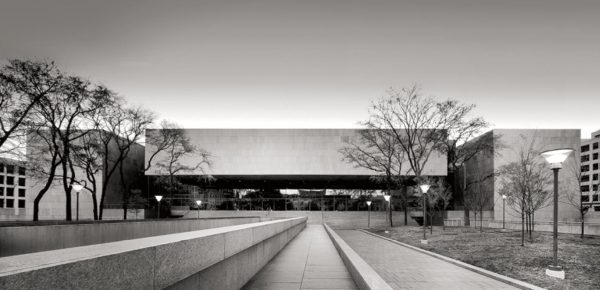
Lundy pipes up with a question: “Would you say that the case is hopeless, as intended in the problem?” He adds: “I confess that I have to admit the possibility of learning something from the client! Maybe there’s something … that will result in a better thing. If a work of architecture is really really good … well, then, the owner will see it!”

“Oh, no!” says Saarinen amidst audible background laughter, and Johnson joins in: “No. You’re young.” Yet Lundy persists: “I’m young but I’ve seen some old things. There’s snobbery in some of this.” His elders maintain their strong opinion, Johnson saying with finality: “If you give in now, the design can only get worse and be worse for your reputation. Because once you are represented by a building you don’t believe in … what is the future of living!?” Surrounded by chuckling veterans of the field and forced to concede to the group, Lundy adds in defeat: “I hope in all of this that Mr. Brown was right!” In the background, Johnson can be heard laughing at the idea that perhaps the client could be right.
At the end of 35 minutes, the group was forced to reach a consensus, and collectively concluded that Brown should reject the changes and walk away from the project. This was the conclusion that all of the groups of architects ultimately came to at the end of their various sessions across all the weekends of the study. Of course, the luxury to even consider this option is only open to very famous architects, those who can afford to refuse commissions.
Ranking & Results
After three grueling days of tests, the architects departed but the study still was not quite over. The architects were mailed surveys and asked to rank one another. Some architects refused to partake in this exercise, but many complied. Johnson rated himself first, as did Saarinen. In the final tally, Johnson was ranked a bit lower on average:
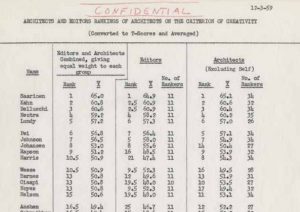
The high conceptions the architects had of themselves matched the findings from a lot of the other studies IPAR had done over the years. The researchers began to notice certain patterns across creatives of all professions and genders, including a tendency to nonconformity and high personal aspirations. They also found many creatives shared a preference for complexity and ambiguity over simplicity and order. Creatives could make unexpected connections and see patterns in daily life, even those lacking high intelligence or good grades.

In short: IPAR found that creative people tend to be nonconforming, interesting, interested, independent, courageous and self-centered, at least in general. Many of these traits may seem obvious today, but they were not necessarily obvious prior to these studies. Back when their tests were being conducted and findings presented in the 1950s and ’60s, the very idea of a “creative personality” was a novelty in academic and public discourse.
Social Research
Over the years, people began to think about personality differently, and methods of inquiry evolved. In the 1970s, an argument was emerging that perhaps personality is not innate but rather a construct. Maybe, some suggested, we humans are products of our environments and social expectations. IPAR and their mission were called into question.
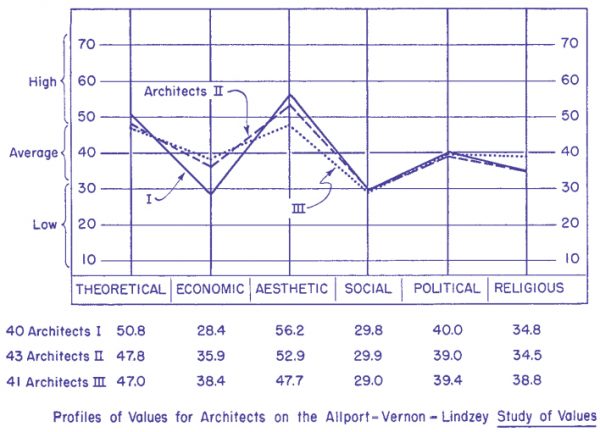
In 1992, IPAR pivoted and became what is now IPSR (the Institute of Personality and Social Research), which has expanded to focus a lot more on social and cultural context (beyond analyzing individuals).
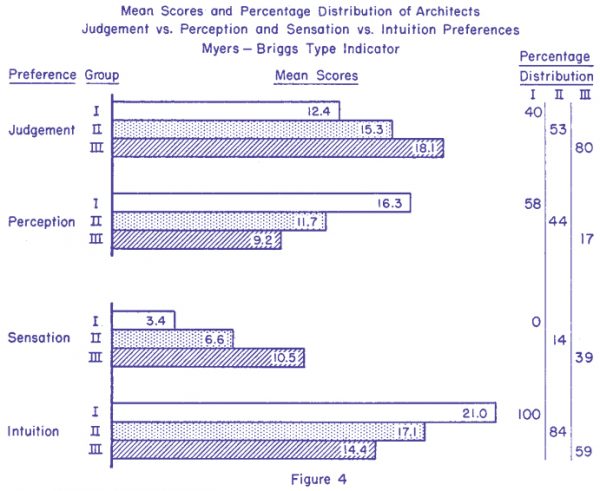
Still, the findings of IPAR, however flawed, proved at least one thing: creativity is not out of bounds for scientific study. Researchers today, including neuroscience experts using fMRI machines and digital brain models, still tackle questions of creative personalities, just in different ways and with new tools and goals. Classes today still reference these creativity studies, even if their methods are seen as outmoded.
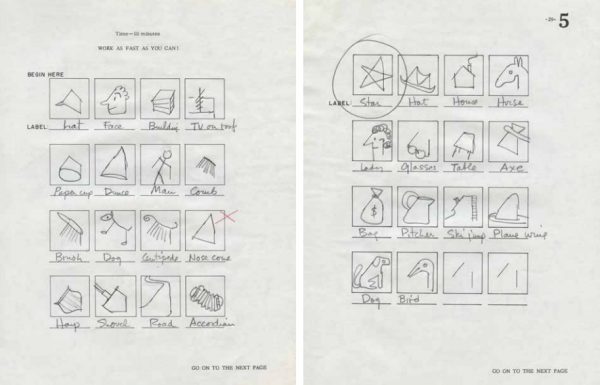
If nothing else, the lasting legacy of the IPAR studies might be the drawings, doodles, written answers and best of all: recordings of these great architects as they discuss essential creative problems … like, where a third arm should go on a human body.








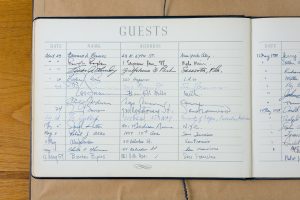




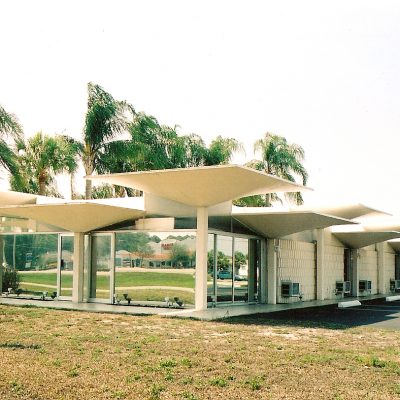




Comments (8)
Share
I’m a newer listener, and I really enjoyed this episode. A nice little step into the exploration of creativity. The inclusion of personalized musical themes to help distinguish between the 3 architects particularly delighted me. Yay functional musical design!
I the quote from Lundy: “I’m young but I’ve seen some old things.” Something he said spontaneously or from some one else?
Thank you for the great show.
fMRI? All present and future mentions of fMRI studies need the disclaimer. That’s your next story.
I don’t understand how we can tell that their personality preceded creativity. The basis for them being selected was that they were already well known. So how can we tell that they had their “I’m number 1” attitude at the beginning of their careers? The 36 year old architect in the podcast seems to suggest that perhaps early on in their careers the creatives can have softer personalities, but as creatives become successful, they become very confident in their abilities.
Or am I missing something?
Overall, great podcast!
The IPAR study looked at individuals in a wide range of professions, but what about other kinds of diversity, e.g. gender, race, class, or, as the previous commenter suggested, age? In a homogenous group of white middle-class men,
the study’s results might also be read a privilege.
The very interesting thing left out of the Ethics Test?
Saarinen was himself an OSS agent in WW2, and Johnson was a Nazi sympathizer who allegedly never fully recanted.
Obviously the third arm should protrude from the lower back, much like a tail. However as this tail has evolved into an actual arm with a hand it gives the architect the ability to pat himself on the back for a job well done.
Hi,
I am impressed by this podcast, and the statements by the architects, do you know how I could get access to the extended recordings from those archives? It’s pure gold.
Thanks